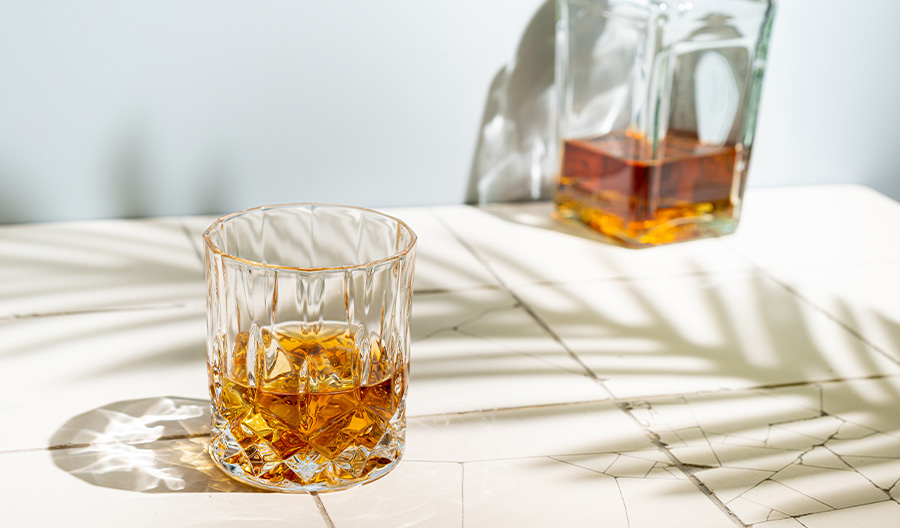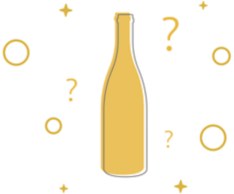Cognac, the most recognizable type of brandy, is famous for many reasons, not least that it was the preferred drink of luminaries from Napoleon to modern-day hip-hop royalty. The latter have famously name-checked specific brands in songs.
The spirit is emblematic of old-world luxury that can be attained by achieving success. Brandy, on the other hand, has not garnered the same pop culture cache. But what’s the difference between the two, exactly? Here’s everything you need to know.
All Cognac Is Brandy, But Not All Brandy Is Cognac
Brandy can be made all over the world, with various fruits and even vegetables. But Cognac is a grape-based brandy exclusively made in the Cognac region of France.
The Interprofessional Bureau of Cognac (BNIC) sets strict regulations for making Cognac. It’s made from specific grape varieties: Ugni Blanc, Colombard, Folle Blanche, Montils and Folignan. Once fermented into a dry, acidic wine, it’s distilled twice in direct-fired Charentais pot stills. The distillate is then aged in 350-liter casks made from French oak.
Cognac producers often blend young brandies with small amounts of much older brandies, meaning single-vintage Cognacs are very rare. Most Cognacs are diluted to 40% abv; cask-strength Cognacs also are rare.
Does Cognac Need to Come from France?
In short, yes. “The city of Cognac gave the name to the brandy, like the city of Bordeaux gave its name to the wines that are produced in Gironde,” explains an international Cognac brand ambassador. Brandies made elsewhere, even elsewhere in France, cannot be called Cognac.
Cognac’s AOC spans from the banks of the Charente River to the shores of the Atlantic Ocean. It also has six smaller growth areas, each with different terroirs: Grande Champagne, Petite Champagne, Borderies, Fins Bois, Bons Bois and Bois Ordinaires. That area stretches across 86,000 hectares, or about 332 square miles.

Does Cognac Taste Different From Other Types of Brandy?
There are a few characteristics that make Cognac stand apart from other types of brandy. Though made of grapes, Cognac often has additional nuanced fruit tones that suggest stone fruit, orchard fruit, citrus or even floral notes. Further, since Cognac is rarely aged in new-oak casks, the impact of the wood tends to be subtle, yielding mellow tannins and light touches of almond and spice. (That said, some Cognacs are finished in barrels that previously held bourbon, which can yield stronger vanilla and spice.)
Longer-aged Cognacs often are nutty or show dried fruit (dates, figs, prune) or candied fruit. Many of the oldest exhibit “rancio,” an umami quality that some liken to aged cheeses, mushrooms or walnuts.
The partner of one hospitality LLC, offers a more poetic take. “[Cognac offers] a delicate balance between the softness of the fruit, almost a juicy foundation, with a hint of toasty spice,” he says. “Especially on cold nights, sipping Cognac always feels like pulling on a warm sweater, one that you last wore while sitting around a campfire weeks ago. It’s cozy, not overly or even noticeably smoky, but [has] the slightest impression of flame and wood. Indulging in that sensation during the holidays will forever be my happy place.”
How Strong Is Cognac? Is It a Wine, Liqueur or Spirit?
Cognac is considered a spirit or liquor, and typically is bottled at around 40% abv (80 proof) or slightly higher. That means it’s much stronger than wine, although both are made from grapes.
Cognac is unsweetened, and not considered a liqueur. However, liqueurs can be made using a Cognac base.
What’s the Best Way to Drink Cognac?
Most pros suggest sipping Cognac neat, whether in a snifter, rocks glass or tulip glass.
Note that there’s no wrong way to drink Cognac, but there are ways that may be better for each customer, personally. One conisseiur notes that “on its own, I veer toward room temperature and neat, and though a snifter looks cool, skip it for a nice Old Fashioned glass with a thin rim.”
In terms of mixing into cocktails, Cognac is “a willing collaborator” with other spirits and flavors. Look to classics like the Sidecar and the Vieux Carré, as well as the Harvard, a Manhattan variation.

